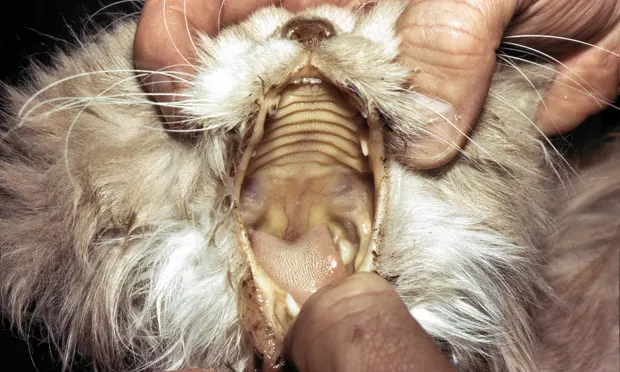Icterus

The term icterus describes the accumulation of bile pigment in tissues. Its presence in the skin is a major clinical finding and its detection mandates a diagnostic evaluation. Icterus can be prehepatic, hepatic, or posthepatic in origin, and each designation may have a different or combined etiopathogenesis.
Pets with prehepatic icterus have hemolytic disease; as a result, anemia and, in most cases, bounding pulses, accompany the icterus. The cat shown (above) demonstrates icterus with pallor. This finding is compatible with marked depletion of red blood cells, which allows only the yellow color caused by the bilirubin to appear in its mucous membranes. The cat's hemocrit was 12% and it was diagnosed with Mycoplasma haemofelis infection.
The dog (below), on the other hand, has icterus but the mucous membranes are not pale, which suggests that the icterus is hepatic or posthepatic in origin. Ample red blood cells are present; thus, the red hue of the oxygenated hemoglobin mixes with the yellow hue of the jaundice to produce an orange appearance. This dog was presumed to have a toxic hepatopathy.
